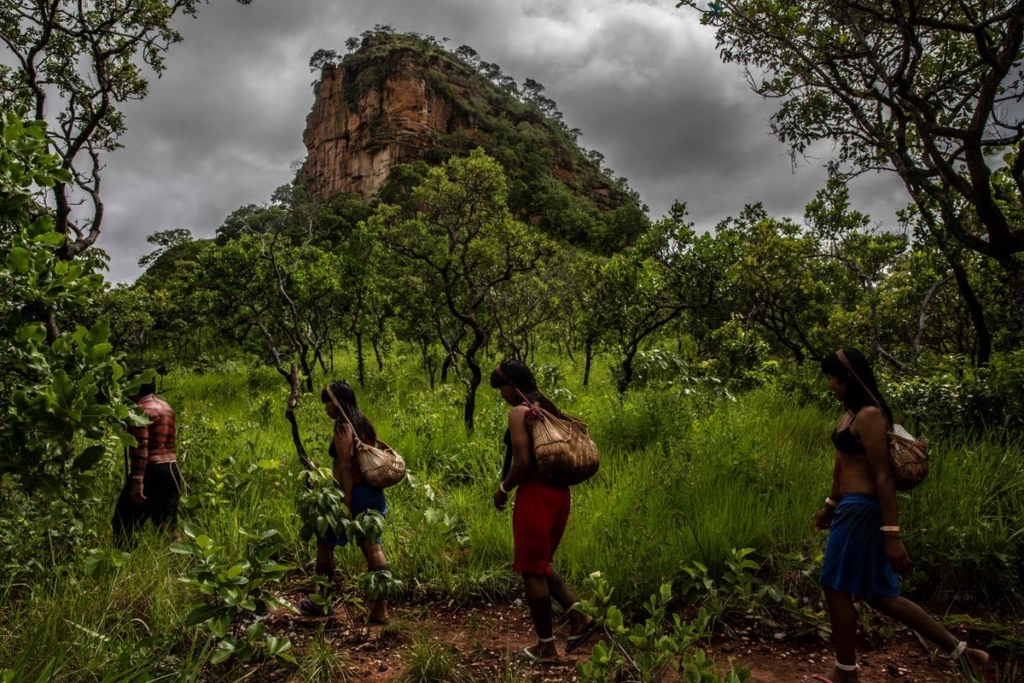
In the 16 countries of the region analyzed by the ‘Rights and Resource Initiative’ report, the area allocated to indigenous and Afro-descendant communities increased by 21 million hectares in five years
Although Latin America has been a pioneer region in recognizing the territorial rights of Afro-descendant, indigenous and local communities, in recent years it has been falling behind. This is stated in the second report ¨Who Owns the Land of the World?¨ published this Thursday by the Rights and Resource Initiative (RRI) organization, in which the percentage that belongs to these communities or, in any case, has been designated to them in 73 countries that cover 85% of the earth’s surface was examined.
While globally between 2015 and 2020 —the period that the report evaluated— the total area of land recognized under community figures increased by 102.8 million hectares, in Latin America the figure barely reached 21 million hectares. Specifically, in the region, the areas designated to indigenous or Afro communities (that is, they use them, but do not own them), increased by four million hectares (from 3% in 2015 to 3.2% in 2020), and the lands that these communities do own grew by 17 million hectares (from 16.7% to 17.6%).
“Latin America made a lot of progress on this issue in the 1980s and 1990s”, says Omaira Bolaños, director of RRI’s Latin America and Gender Justice programs. “But, since then, in what remains pending, the allocation of new indigenous territories has been very slow”. She even explains that, although the global figure is good news, since there was an increase, she also recalls that this increase is only due to what happened in 38 of the 73 countries analyzed. Many of them are located in Africa.
Given this, Levi Sucre, indigenous leader and representative of the Global Alliance of Territorial Communities, also believes that it is a somewhat discouraging scenario. “We are alarmed that the recognition of indigenous lands and local communities is stagnant because it means that our forests are vulnerable to extractivism; that our lives and cultures are at risk and that all of humanity is losing the chance to fight the climate crisis. Governments continue to make promises to mitigate climate change until 2030, but they don’t title land, as it is the most effective and efficient way to protect forests”, he points out.
With these new figures, and according to the WWI report, in the 16 Latin American countries analyzed, around 79% of the land is in the hands of the State or private individuals, 18% is owned by Afro-descendant or indigenous communities, and 3% has only been designated for a collective use of these populations.
What´s happening in Latin America?
According to the report, one of the countries that helped improve the outlook for the region in these years was Panama. There, after the closure of a case that went the Court, the Naso Tjër indigenous communities were allowed to become owners of 160,000 hectares of land, which became a precedent. “There has always been a limitation because it was considered in Panama that in protected areas territory could not be demarcated for indigenous peoples”, adds Bolaños. But after this action by the Government, which makes this emblematic recognition, it is made clear that conservation and the presence of indigenous people are coherent. They are not limited and, in fact, as other research has shown, where indigenous people live is where there is less deforestation and greater biodiversity”, says the expert.
In other countries, such as Guyana, progress was also made. The country recognized the Kanashen Amerindian Protected Area, the first of its kind, which covers 3% of Guyana’s land area.
The problem, the report stresses, is that in addition to the fact that Latin America began to fall behind in demarcating new areas for Afro and indigenous peoples, those that are already standing, at least on paper, are experiencing strong threats. One of the most high-profile cases was in Brazil, when former President Jair Bolsonaro cut funding to the country’s indigenous affairs agency and issued an order giving Brazil’s Ministry of Agriculture greater power over indigenous lands. In Peru, the report also points out, the communities of the Amazon and the Andes have had to file lawsuits to protect their territory in the face of pressure from oil and mining companies who have been given concessions at the central level without consulting with the communities who inhabit the territory. This example could be cited in almost every Latin American country.
And it is that, as Bolaños says, as long as the region continues to maintain an economic model based on the extractivism of natural resources, there will always be pressure not only to not recognize new Afro and indigenous territories, but to infiltrate those that are already protected under this figure.
Original article at https://elpais.com/america-futura/2023-06-15/el-territorio-indigena-en-america-latina-aumenta-a-pequenos-pasos.html
Translated by Schools for Chiapas.
